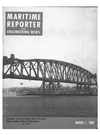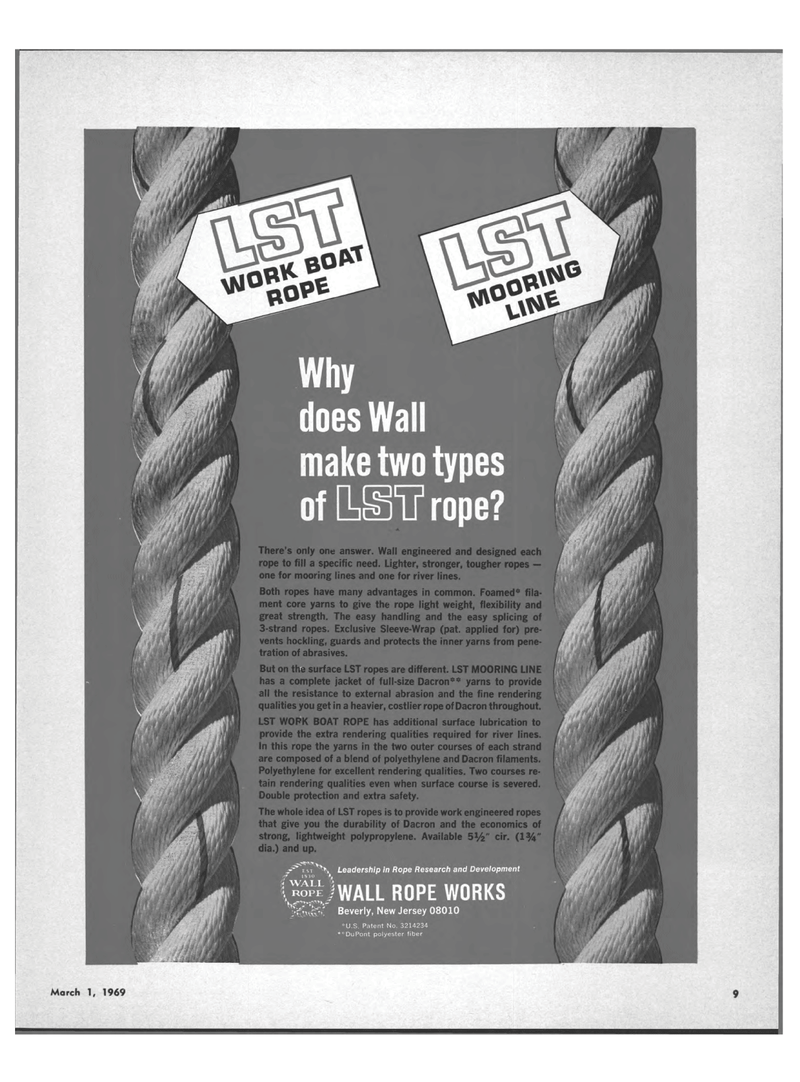
Page 7: of Maritime Reporter Magazine (March 1969)
Read this page in Pdf, Flash or Html5 edition of March 1969 Maritime Reporter Magazine
does Wall make two types of [LSTF rope? There's only one answer. Wall engineered and designed each rope to fill a specific need. Lighter, stronger, tougher ropes ? one for mooring lines and one for river lines. Both ropes have many advantages in common. Foamed* fila-ment core yarns to give the rope light weight, flexibility and great strength. The easy handling and the easy splicing of 3-strand ropes. Exclusive Sleeve-Wrap (pat. applied for) pre-vents hockling, guards and protects the inner yarns from pene-tration of abrasives. But on the surface LST ropes are different. LST MOORING LINE has a complete jacket of full-size Dacron** yarns to provide all the resistance to external abrasion and the fine rendering qualities you get in a heavier, costlier rope of Dacron throughout. LST WORK BOAT ROPE has additional surface lubrication to provide the extra rendering qualities required for river lines. In this rope the yarns in the two outer courses of each strand are composed of a blend of polyethylene and Dacron filaments. Polyethylene for excellent rendering qualities. Two courses re-tain rendering qualities even when surface course is severed. Double protection and extra safety. The whole idea of LST ropes is to provide work engineered ropes that give you the durability of Dacron and the economics of strong, lightweight polypropylene. Available cir. (1 Leadership in Rope Research and Development dia and ? rSpeIWALL rope works ' Di.mrlu Mo... lorcounsnm Beverly, New Jersey 08010 "U.S. Patent No. 3214234 "DuPont polyester fiber March 1, 1969 9

 6
6

 8
8
